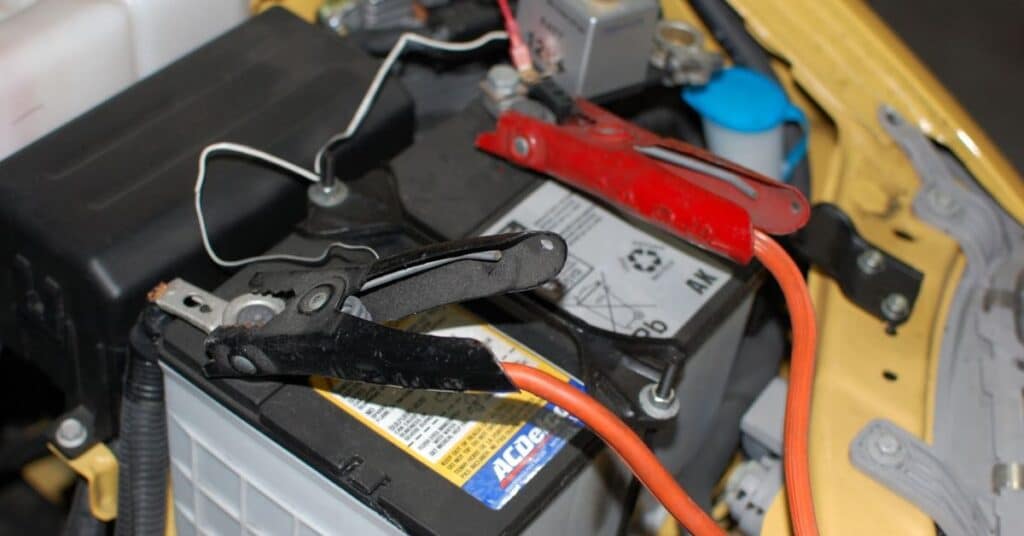With the complexity of modern vehicles featuring sophisticated electrical systems and components, the batteries powering everything from hybrid drivetrains to safety sensors pose potential risks if damaged or handled improperly.
This leads to the critical question – what hazard class do automotive batteries fall under? Given the toxic, volatile chemicals they contain along with the ability to leak corrosive substances or ignite, batteries require careful transport, storage and disposal per hazardous materials regulations. Determining the specifics of their classification helps workers across the automotive industry remain compliant and exercise due caution in maintenance procedures, containing any spills properly while avoiding disastrous explosions or contamination.
According to Wikipedia
A hazard is something that could cause harm. It could be a substance, event, or circumstance with the potential to damage health, life, property, or anything else valuable. Risk, which is often used interchangeably with hazard, depends on both the likelihood of harm occurring in a particular situation and the potential severity of that harm.
What is a Corrosive Hazardous Material?
A corrosive hazardous material is any substance that can rapidly damage or destroy exposed surfaces upon contact. Corrosives can quickly eat away skin, eyes, metal, and other materials by chemical reaction when spilled.
Some of the most common examples categorized as corrosive hazards include strong acids (like sulfuric, nitric, or hydrochloric acid), concentrated alkaline solutions (such as sodium hydroxide or ammonia), and oxidizing agents (like hydrogen peroxide).
When handling corrosive materials, extreme cautions must be taken to prevent direct human contact or accidental leaks:
- Personnel should always wear specified suits, gloves, eye shields and face protection when working with corrosive substances to minimize bodily exposure.
- Prepare neutralizing agents like vinegar or baking soda solutions that can counteract corrosive spills in an emergency.
- Use transport containers, piping, valves, and collection tools composed of specially resistant materials when managing corrosives, such as certain grades of plastic or stainless steel.
- Clearly label all vessels containing corrosives to alert people of their hazardous contents.
- Set up secondary containment systems like absorbent pads or spill trays to limit spill expansion and environmental/facility damage.
With training in ideal equipment and safety protocol, personnel can help control the heightened risks surrounding corrosive chemical hazards.
Why is the battery a Hazard?

Batteries pose potential hazards due to the corrosive and volatile chemicals they contain. The electrolytes inside battery cells include very caustic substances like potassium hydroxide or sulfuric acid that can leak and spill if a battery case cracks. These corrosive electrolytes can cause chemical burns when they come into contact with eyes or skin.
It also contain potentially flammable materials, like lithium or hydrogen gas, that can ignite if exposed to air or subjected to excessive heat. This could lead to fires or even explosions under extreme conditions.
Frequently Asked Questions
What hazards are batteries?
Batteries pose several key hazards:
- Corrosive hazard – Batteries contain caustic electrolytes which can leak and spill, causing chemical burns to eyes and skin. Electrolytes usually include very corrosive substances like potassium hydroxide or sulfuric acid.
- Fire/explosion hazard – Materials inside batteries such as lithium metal or hydrogen gas can ignite if exposed to air, sparking explosions in extreme cases. Short-circuiting the terminals can also generate sparks and uncontrolled energy release.
- Environmental hazard – Toxic heavy metals like lead, cadmium and mercury contained in some batteries can leach out and pollute ecosystems when improperly disposed.
Are batteries a corrosive hazard?
Yes, batteries would be considered a corrosive hazard due to the very caustic electrolytes they utilize such as potassium hydroxide and sulfuric acid solutions which can leak through any cracks or fissures in the battery housing.
Final Words
Automotive batteries represent a combination hazardous material classification – exhibiting both corrosive and fire/explosive dangers under transportation, maintenance and disposal scenarios. The sulfuric acid electrolyte central to typical lead-acid car batteries means they qualify as Class 8 Corrosives capable of inflicting chemical burns.
Simultaneously, the explosive hydrogen gas they can emit and presence of ignitable materials like lithium or propellants means battery systems also align with Class 1 Explosives unlikely to mass detonate but containing substances where reactions or fires remain possible.

Hey there! I have 5 years of experienced repairing all makes and models. Specializes in engine diagnostics, brake repair, electrical systems, and teaching DIY maintenance tips. Passionate about keeping cars running safely.








